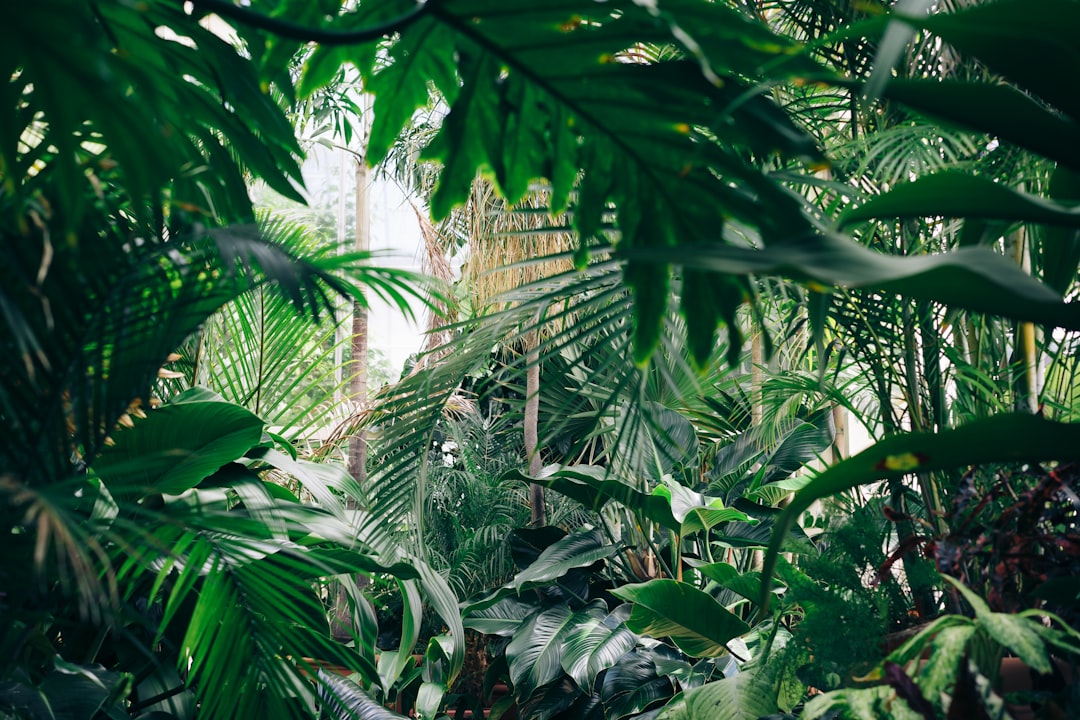If you’ve noticed brown, crispy leaf edges on your tropical plants or stunted growth, the problem might not be light or watering—it could be the humidity. Humidity plays a vital role in the health of houseplants, especially those from lush, tropical environments. But don’t worry; creating the right environment for your indoor jungle is easier than you might think.
In this post, we’ll explore what humidity is, why it matters to your plants, and how to provide the ideal conditions for your leafy companions to thrive.
What Is Humidity, and Why Does It Matter?
Humidity is the amount of moisture (water vapor) in the air. Many houseplants, especially tropical ones, come from regions where the air is naturally humid. For them, moisture in the air helps regulate their water balance, keeping their leaves hydrated and healthy.
When the air in your home is too dry, plants struggle to retain moisture, leading to brown edges, leaf drop, and slowed growth. Understanding your plant’s humidity needs is essential to recreate its natural environment.
Signs Your Plants Need More Humidity
-
Brown, crispy leaf tips or edges
-
Drooping leaves, despite proper watering
-
Leaf curling or distortion
-
Slower growth than usual
If you see these symptoms and watering hasn’t helped, it’s time to evaluate the humidity level in your home.
How to Measure Humidity
The humidity level in a home is typically measured as relative humidity (RH), which is the percentage of moisture in the air relative to the maximum amount the air can hold.
-
Tropical plants like calatheas, ferns, and monstera prefer humidity levels of 50–80%.
-
Desert plants like succulents and cacti thrive in lower humidity, around 20–40%.
To check your home’s humidity:
-
Use a hygrometer (available online or in hardware stores) for accurate readings.
-
Observe your plants—changes in their health can be a clue.
5 Ways to Increase Humidity for Your Plants
If your home is too dry, especially during the winter when heaters are running, here are simple ways to boost humidity:
1. Group Your Plants
Plants release moisture through a process called transpiration. By grouping several plants together, you create a mini humid microclimate as they release water vapor into the air.
2. Use a Humidifier
The most effective way to increase humidity is to use a humidifier. Place it near your plants and set it to maintain a humidity level between 50–60%. This is especially helpful for plants like ferns, calatheas, and orchids.
3. Create Pebble Trays
-
Fill a shallow tray with pebbles and water, then place your plant’s pot on top (make sure the pot isn’t sitting directly in the water).
-
As the water evaporates, it increases humidity around the plant.
4. Mist Your Plants
Lightly misting your plants can provide temporary humidity, but it’s not a long-term solution. Use filtered or distilled water to avoid mineral spots on the leaves. Be cautious, as some plants, like succulents, dislike having wet leaves.
5. Move Plants to High-Humidity Areas
Bathrooms and kitchens are naturally more humid due to showers, cooking, and running water. Consider placing humidity-loving plants in these spaces if they get adequate light.
Which Plants Love High Humidity?
Many houseplants hail from rainforests and tropical regions, making them humidity enthusiasts. Here are some popular options that thrive in higher humidity levels:
-
Ferns (e.g., Boston fern, maidenhair fern): Need consistently high humidity and moist soil.
-
Calatheas: Known for their striking patterns but prone to crisping without enough humidity.
-
Monsteras: While hardy, monsteras grow faster and healthier in humid conditions.
-
Orchids: Love humidity but require good airflow to prevent fungal issues.
-
Peace Lilies: Thrive in humid environments and reward you with lush, green foliage.
Which Plants Can Tolerate Low Humidity?
If your home tends to be on the drier side, consider these hardy plants that are more forgiving of low humidity:
-
Snake Plant (Sansevieria): Almost indestructible and prefers dry air.
-
ZZ Plant: Thrives in low light and dry conditions.
-
Succulents (e.g., aloe vera, jade plant): Naturally adapted to arid climates.
-
Pothos: While they enjoy some humidity, they can adapt to drier environments.
How Seasonal Changes Affect Humidity
-
Winter: Heating systems can drastically lower indoor humidity levels. Increase humidity using a humidifier or pebble trays.
-
Summer: Humidity is generally higher, so your plants may need less attention to maintain proper moisture levels.
Tip: Keep plants away from drafts, heaters, and air conditioners, as these can dry out the air and stress your plants.
Balancing Humidity with Airflow
While increasing humidity is important, you also need proper airflow to prevent stagnant, overly damp air, which can lead to mold and pests. Here’s how to balance the two:
-
Use fans to circulate air in the room without blowing directly on plants.
-
Avoid overcrowding plants to ensure good ventilation.
Conclusion
Humidity is a critical yet often overlooked factor in houseplant care. By understanding the humidity needs of your plants and providing the right environment, you can transform your home into a thriving indoor jungle.
Whether you invest in a humidifier, create pebble trays, or simply group your plants together, even small changes can make a big difference in your plant’s health and happiness.
Do you have any tips for maintaining humidity for your plants? Share your experiences and tricks in the comments below!

Comments
No comments yet. Be the first to comment!
You must be logged in to comment. Login